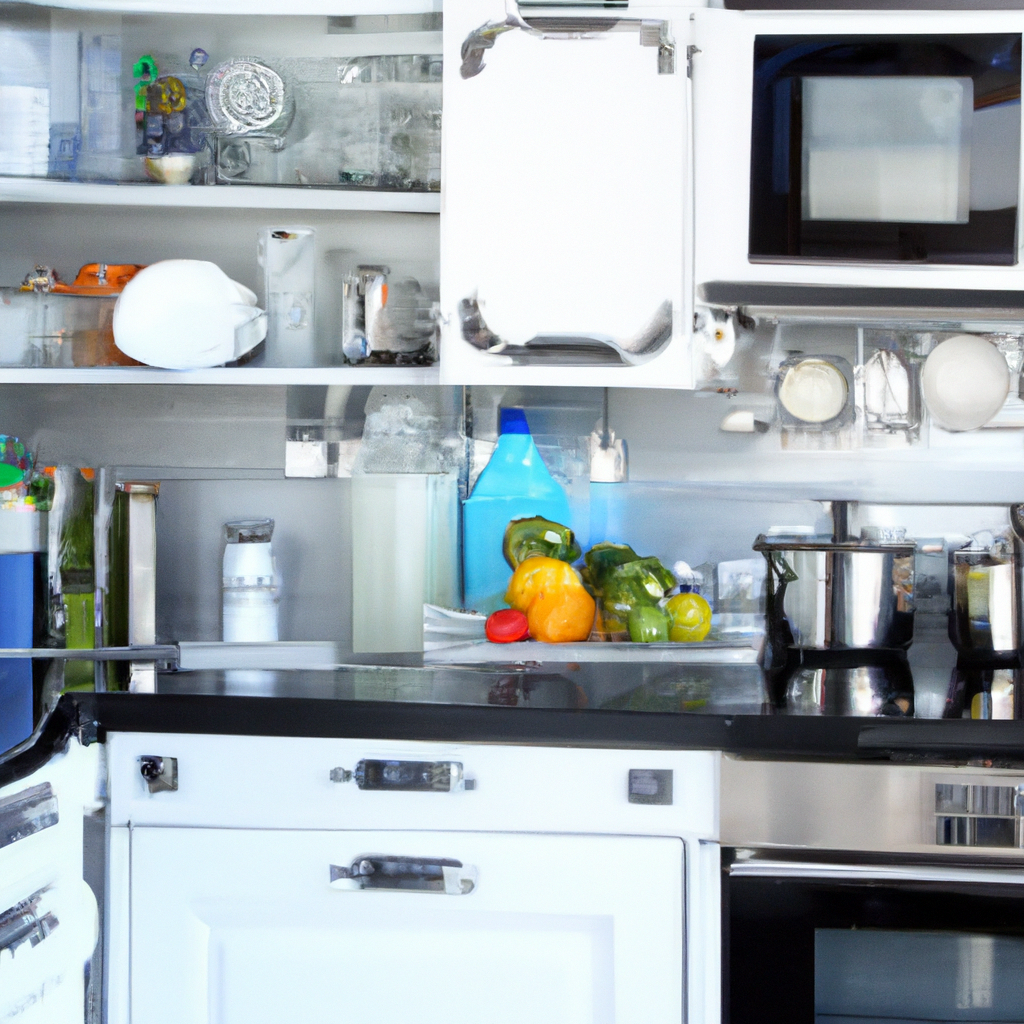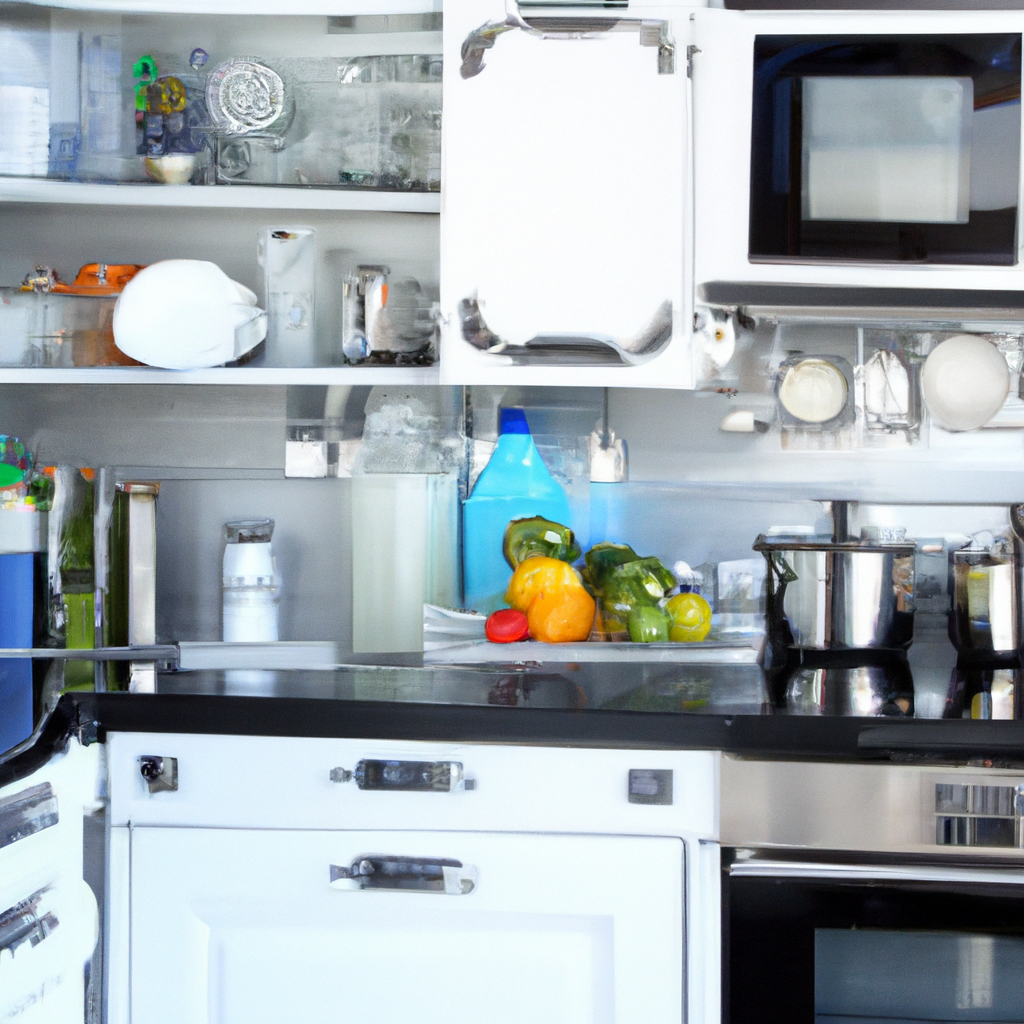In today’s fast-paced world, having a smart kitchen can not only simplify your daily tasks but also add a touch of convenience to your cooking experience. But what if you’re looking to take your smart kitchen to the next level? Are there any do-it-yourself projects out there that can further enhance its functionality? Thankfully, the answer is a resounding yes! From customizing your own voice-controlled recipe assistant to creating smart storage solutions, this article explores some exciting DIY projects that will help you unlock the true potential of your smart kitchen. So grab your tools and get ready to elevate your culinary domain with these ingenious ideas. Yes, there are DIY projects that can significantly enhance the functionality of a smart kitchen. By integrating smart appliances, lighting, home integration, storage solutions, meal planning, cooking devices, kitchen monitoring, waste management, water solutions, and security into your kitchen, you can create a truly smart and efficient space. In this article, we will explore a range of DIY projects that will help you upgrade your kitchen to a smart kitchen paradise.
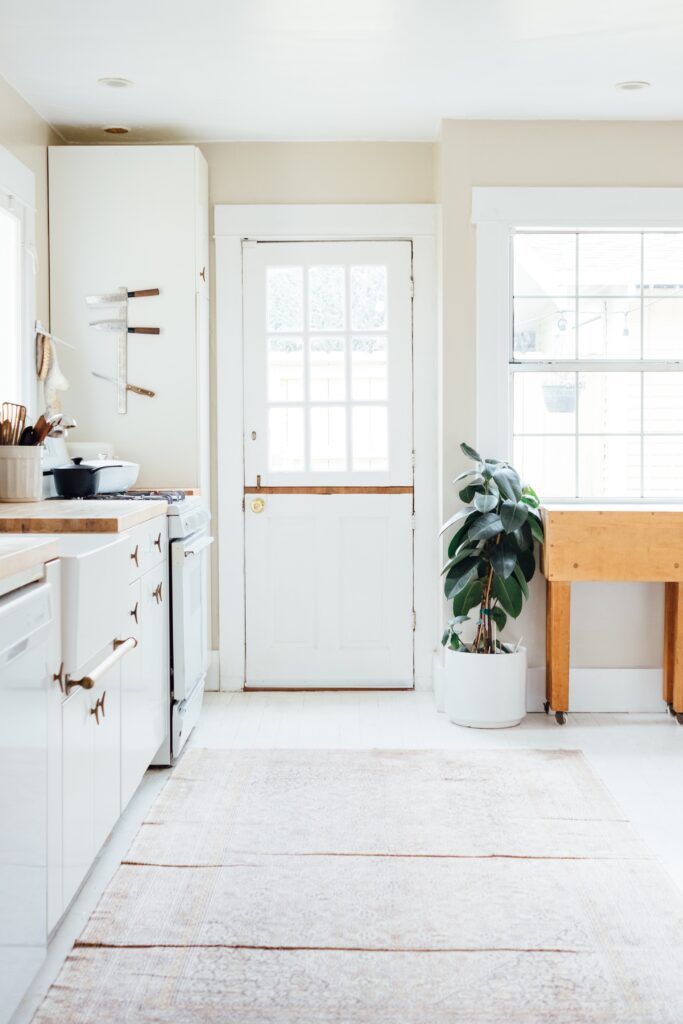
Smart Appliances
Upgrading Existing Appliances: If you’re not ready to invest in brand new smart appliances, you can still make your existing appliances smarter. There are various smart device add-ons and upgrades available in the market that can transform your traditional appliances into smart ones. From smart plugs to sensor attachments, these DIY solutions can add smartphone connectivity and control to your appliances, allowing you to operate them remotely and save energy.
Installing Smart Plugs: Smart plugs are a simple but effective way to make your kitchen appliances smarter. By plugging your appliances into smart plugs, you can control their power supply through smartphone apps or voice commands. This means that you can turn on or off your coffee machine, slow cooker, or toaster oven from anywhere in your home or even when you’re away. Smart plugs can also help you monitor your energy consumption and schedule appliance usage for optimal efficiency.
Creating a Smart Kitchen Hub: Transforming your kitchen into a smart hub can greatly enhance its functionality. By installing a smart display or tablet on a convenient spot in your kitchen, you can access various smart features, including recipe apps, voice assistants, weather updates, and even video calls. With a smart kitchen hub, you can easily follow recipes, control other smart devices, and stay connected while you cook. This DIY project can significantly streamline your kitchen tasks and make your cooking experience more enjoyable.
Smart Lighting
Installing Smart Bulbs: Upgrading your kitchen lighting to smart bulbs is a fantastic DIY project that offers both convenience and energy efficiency. Smart bulbs can be controlled remotely through smartphone apps or integrated into smart home systems. You can dim or brighten your kitchen lights, change their colors, and even set schedules or create lighting scenes to suit different activities. With smart bulbs, you can easily adjust the lighting ambiance to create the perfect atmosphere for cooking, dining, or entertaining.
Setting Up Voice Control: Pairing your smart bulbs with voice control systems like Amazon Alexa or Google Assistant can take your kitchen lighting to the next level. Imagine being able to turn on or off your lights, adjust their brightness, or change their colors with simple voice commands while you’re busy cooking. This DIY project not only adds convenience but also eliminates the need for physical switches, making your kitchen more modern and user-friendly.
Creating Custom Lighting Scenes: With smart lighting, you can create customized lighting scenes in your kitchen. For example, you can set a bright and vibrant scene for cooking, a warm and cozy scene for dining, or a dim and relaxing scene for winding down in the evening. By using smart home apps or voice commands, you can activate these scenes effortlessly and transform the atmosphere of your kitchen to suit your needs and preferences.
Smart Home Integration
Connecting Smart Devices: One of the key benefits of a smart kitchen is the ability to integrate different smart devices seamlessly. By connecting your smart appliances, lighting, security systems, and other devices to a central hub or smart home ecosystem, you can control and monitor them through a single interface. Whether it’s adjusting your oven temperature, checking your security camera footage, or turning on your kitchen lights, having a unified control system makes managing your smart home more intuitive and convenient.
Creating Routines and Automation: With smart home integration, you can create routines and automation that simplify your kitchen tasks. For example, you can set up a “Good Morning” routine that automatically turns on your coffee machine, adjusts the lighting to a bright setting, and plays your favorite morning playlist when you enter the kitchen. Similarly, you can schedule your smart appliances to operate at specific times or create automation triggers, such as turning on the ventilation fan when you start cooking. These DIY projects can save you time and make your kitchen more efficient.
Exploring Voice Assistant Features: Voice assistants, such as Amazon Alexa or Google Assistant, are an integral part of smart home integration. In the kitchen, voice assistants can be incredibly helpful for various tasks. You can ask for recipe recommendations, convert measurements, set timers, create shopping lists, or even find cooking tutorials. Voice assistants can also be used to control other smart devices, such as adjusting the temperature on your oven or turning off your smart plugs. By exploring the different features and capabilities of voice assistants, you can make your kitchen smarter and more interactive.
Smart Storage Solutions
Building Smart Pantry Shelves: DIY smart pantry shelves are an excellent way to organize and optimize your kitchen storage. With simple sensors and labels, you can create a smart inventory system that helps you keep track of your pantry supplies. For example, you can install weight sensors on your shelves that notify you when a specific item is running low or close to its expiration date. This DIY project ensures that you never run out of essential ingredients and minimizes food waste.
Organizing with Smart Labels: Smart labels are a practical DIY solution for organizing your kitchen cabinets and drawers. You can create custom labels or use pre-printed NFC tags that can be programmed with information about the contents and expiry dates of your food items. By scanning these labels with your smartphone, you can easily track your inventory, make shopping lists, and prevent food from going to waste. Smart labels are a simple yet effective way to streamline your kitchen organization.
Creating a Smart Fridge Inventory: If you have a smart refrigerator, you can take advantage of its features to create a smart fridge inventory. Many smart fridges come with built-in cameras that allow you to see what’s inside without opening the door. By regularly checking the inventory through a smartphone app, you can keep track of what you have, what needs to be used soon, and what items you need to restock. This DIY project helps you plan your meals better and avoid food spoilage.
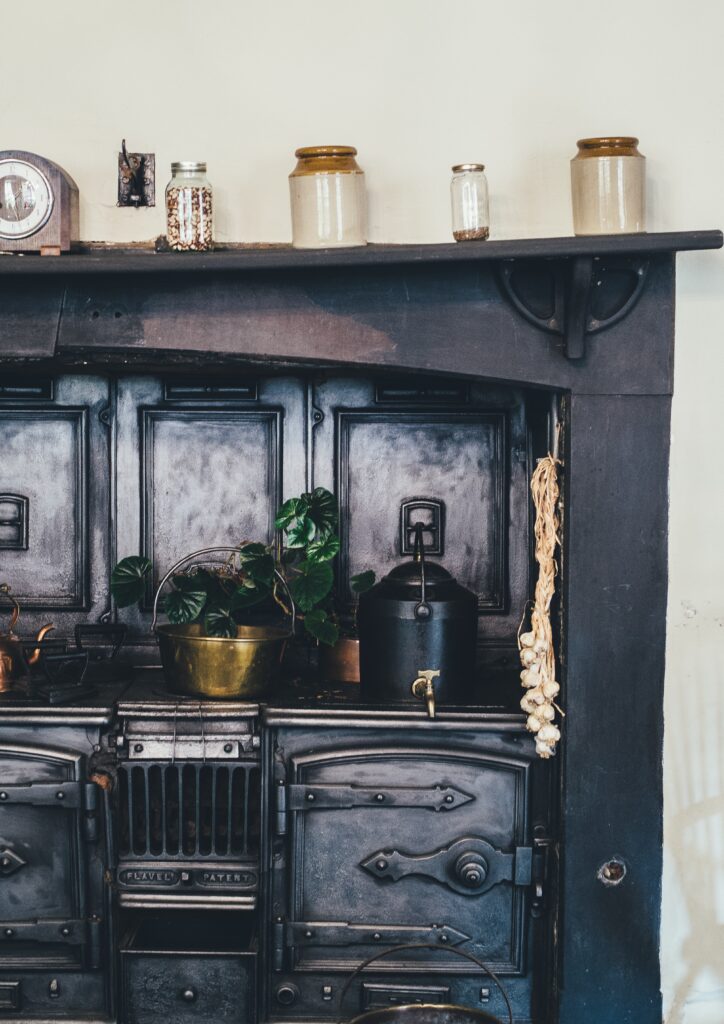
Smart Meal Planning
Utilizing Recipe Apps and Smart Displays: Meal planning becomes much easier with the help of recipe apps and smart displays. By using recipe apps on your smartphone or tablet, you can explore thousands of recipes, easily filter them based on dietary preferences or ingredient availability, and save your favorite ones for future use. Smart displays take this convenience a step further by providing hands-free access to recipe instructions. They can display step-by-step instructions, videos, and even nutritional information while you cook. Integrating recipe apps and smart displays into your kitchen enhances the meal planning process and ensures you create delicious meals every time.
Automating Grocery Shopping: With smart meal planning, you can automate your grocery shopping process and save time. Many grocery delivery services now offer apps that allow you to create shopping lists based on your meal plans. You can add ingredients directly from recipe apps or your smart display, and the app will generate a shopping list for you. Some smart fridges can even connect to grocery delivery services and automatically order food items when you’re running low. Automating your grocery shopping ensures that you always have the ingredients you need and eliminates unnecessary trips to the store.
Tracking and Managing Food Expiration: A smart kitchen can help you track and manage food expiration dates more effectively. By using inventory management apps or smart labels, you can set reminders for expiring food items or create alerts when ingredients are nearing their expiration dates. This DIY project helps reduce food waste and ensures that you use ingredients before they go bad. It also helps you plan your meals based on what needs to be consumed first, saving you money and minimizing food spoilage.
Smart Cooking
Using Smart Sous Vide Machines: A sous vide machine is a fantastic addition to a smart kitchen. By immersing vacuum-sealed food in a water bath at a precise temperature, it ensures perfect cooking results every time. Smart sous vide machines connect to smartphone apps, allowing you to monitor and control the cooking process remotely. You can set timers, adjust temperatures, and receive notifications when your food is ready. This DIY project takes the guesswork out of cooking and helps you achieve restaurant-quality meals without any hassle.
Exploring Smart Ovens and Cooktops: If you’re in the market for new kitchen appliances, consider upgrading to smart ovens and cooktops. Smart ovens come with advanced features like Wi-Fi connectivity, touchscreen controls, and pre-programmed cooking modes. They can be controlled remotely through smartphone apps, allowing you to preheat, adjust temperatures, or even receive alerts when your food is done. Smart cooktops offer similar benefits and allow you to wirelessly control burner settings or automatically adjust cooking temperatures. These DIY projects make cooking more convenient and efficient.
Integrating Voice-guided Cooking: Voice-guided cooking is another innovative feature in smart kitchens. With voice-guided cooking, you can use smart appliances or apps to follow step-by-step recipe instructions using simple voice commands. The appliance or app will guide you through each cooking stage, telling you when to add ingredients, adjust cooking settings, or even flip food. Voice-guided cooking ensures that you never miss a step and achieve consistent cooking results. This DIY project makes cooking more accessible and enjoyable for everyone, especially for those who are new to the kitchen.
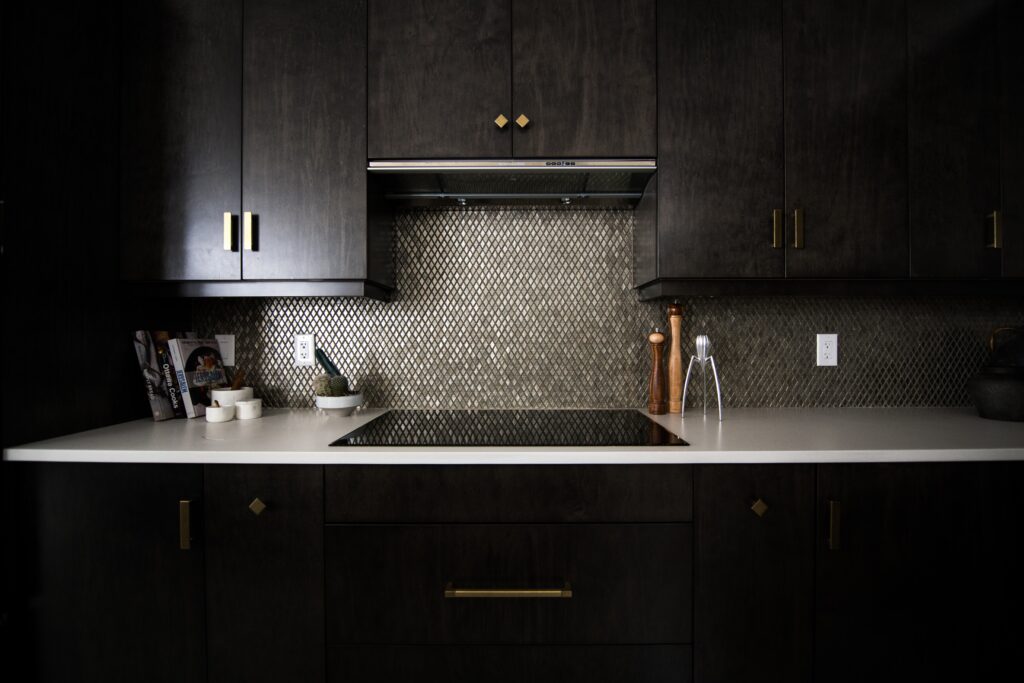
Smart Kitchen Monitoring
Installing Smart Cameras: Smart cameras are an essential DIY project for kitchen monitoring and security. By installing cameras in strategic locations, such as above the stove or near the entrance, you can keep an eye on your kitchen activities at all times. Some cameras offer live streaming capabilities that allow you to monitor your kitchen remotely through smartphone apps. This DIY project enhances kitchen safety and provides peace of mind, especially when you’re away from home.
Setting Up Leak and Smoke Detectors: Another crucial aspect of kitchen monitoring is detecting leaks or smoke. DIY leak and smoke detectors can be easily installed near water sources or above cooking areas. These detectors can notify you through smartphone alerts or trigger audible alarms when they detect leaks or smoke. By promptly addressing these issues, you can prevent costly damages and ensure the safety of your kitchen and home.
Monitoring Energy Consumption: Smart energy monitoring devices help you track your kitchen’s energy usage and identify energy-saving opportunities. By connecting these devices to your appliances, you can monitor their power consumption in real-time and track trends over time. Some smart energy monitors even provide recommendations and tips on how to reduce energy usage. This DIY project helps you make informed decisions about your energy consumption and promotes environmentally friendly practices in your kitchen.
Smart Waste Management
Implementing Smart Trash Bins: Smart trash bins provide a convenient and hygienic solution for waste management in your kitchen. These bins come with features like motion sensors that automatically open the lid when you approach, reducing the need for physical contact. Some smart trash bins also offer built-in compaction systems, which can greatly increase storage capacity and reduce the frequency of emptying. By implementing smart trash bins, you can minimize odors, maintain cleanliness, and simplify waste disposal in your kitchen.
Recycling and Composting Solutions: DIY recycling and composting systems are excellent projects for creating a sustainable and eco-friendly kitchen. You can set up separate recycling bins for different materials, such as plastics, glass, or paper, and educate your family members about the importance of recycling. Composting systems, on the other hand, allow you to turn food scraps and organic waste into nutrient-rich compost for your garden. By recycling and composting, you can minimize landfill waste and contribute to a greener environment.
Reducing Food Waste with Smart Tech: Smart technology can help you reduce food waste in your kitchen. By using smartphone apps or smart labels, you can keep track of your food inventory, set reminders for approaching expiration dates, or even receive recipe suggestions based on the ingredients you have. Some apps also provide tips and tricks for reducing food waste, such as proper storage techniques or creative ways to use leftover ingredients. DIY projects focused on smart food management ultimately help you save money, reduce waste, and make sustainable choices in your kitchen.
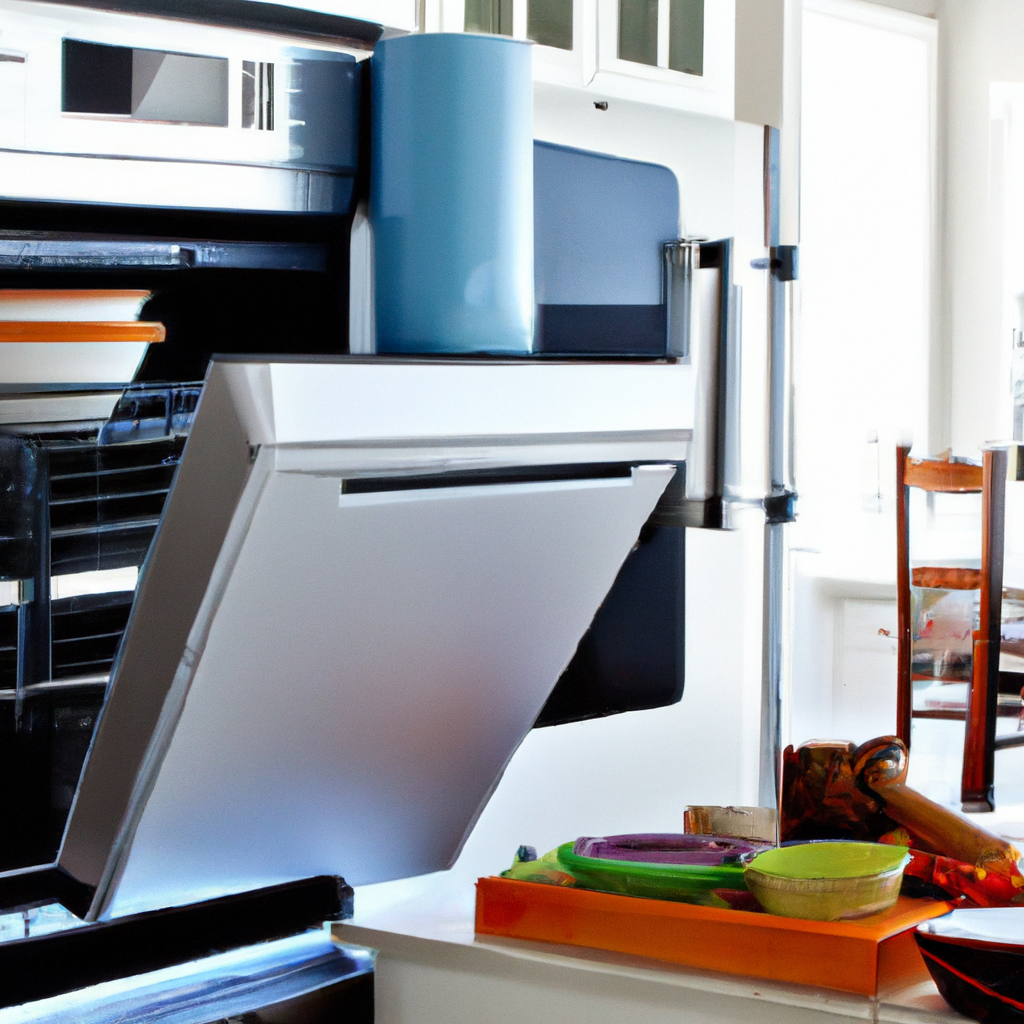
Smart Water Solutions
Installing Smart Faucets: Smart faucets are an excellent addition to any smart kitchen. These faucets come with motion sensors or touchless capabilities, allowing you to turn the water on or off without touching the handle. Some smart faucets also offer voice control features, enabling you to adjust temperature or flow rate with simple voice commands. Additionally, smart faucets can help you monitor your water usage and save water by providing real-time consumption data. This DIY project adds convenience and promotes water conservation in your kitchen.
Monitoring Water Usage: DIY water monitoring systems can help you track and manage your kitchen’s water consumption. These systems typically consist of sensors that attach to your water supply lines and measure the amount of water used. The data collected by these sensors can be sent to your smartphone or a central monitoring hub, allowing you to keep track of your water usage in real-time. By being aware of your consumption patterns, you can identify areas where water is being wasted and take steps to minimize it. This DIY project promotes responsible water usage and helps you save on utility bills.
Exploring Water Filtration Systems: If you want to enhance the quality of your kitchen’s water, consider installing a water filtration system. DIY water filtration systems vary in complexity, ranging from simple faucet-mounted filters to more comprehensive under-sink systems. These systems can remove impurities, chemicals, and contaminants, providing you with clean and safe drinking water. By exploring different water filtration options, you can find a DIY project that suits your needs and improves the overall water quality in your kitchen.
Smart Security
Enhancing Kitchen Access Control: Smart access control systems offer an advanced level of security for your kitchen. These systems replace traditional key-based locks with electronic locks that can be controlled remotely through smartphone apps or voice commands. By implementing smart locks on your kitchen doors or cabinets, you can grant access to authorized users, receive notifications when someone enters or leaves, and even remotely lock or unlock the doors. This DIY project adds an extra layer of protection to your kitchen and enhances overall home security.
Implementing Smart Locks: In addition to enhancing access control, smart locks offer various features that make your kitchen more secure. Some smart locks come with built-in cameras or video doorbell integration, allowing you to see who is at the door before granting access. Others offer temporary access codes that can be shared with trusted individuals, such as family members or service providers, while maintaining control over who enters your kitchen. DIY smart locks are relatively easy to install and can significantly improve the security and privacy of your kitchen.
Integrating Alarm Systems: DIY alarm systems are an effective way to deter burglars and safeguard your kitchen. These systems typically include motion sensors, door/window sensors, and a central control panel that sounds an alarm when triggered. Some smart alarm systems can be integrated with other smart devices, such as cameras or smart locks, creating a comprehensive security solution for your kitchen. With DIY alarm systems, you can rest assured that your kitchen is protected from unwanted intrusions, whether you’re at home or away.
In conclusion, there are numerous DIY projects that can enhance the functionality of a smart kitchen. From upgrading existing appliances and installing smart plugs to creating a smart kitchen hub and integrating smart lighting, there are endless possibilities to make your kitchen smarter and more efficient. By implementing smart storage solutions, meal planning strategies, cooking devices, kitchen monitoring systems, waste management solutions, water solutions, and security measures, you can transform your kitchen into a modern and streamlined space. Whether you choose one DIY project or embark on multiple, the result will be a smart kitchen that enhances your cooking experience, saves you time and energy, and promotes a more sustainable lifestyle. So roll up your sleeves, get creative, and make your dream smart kitchen a reality!
